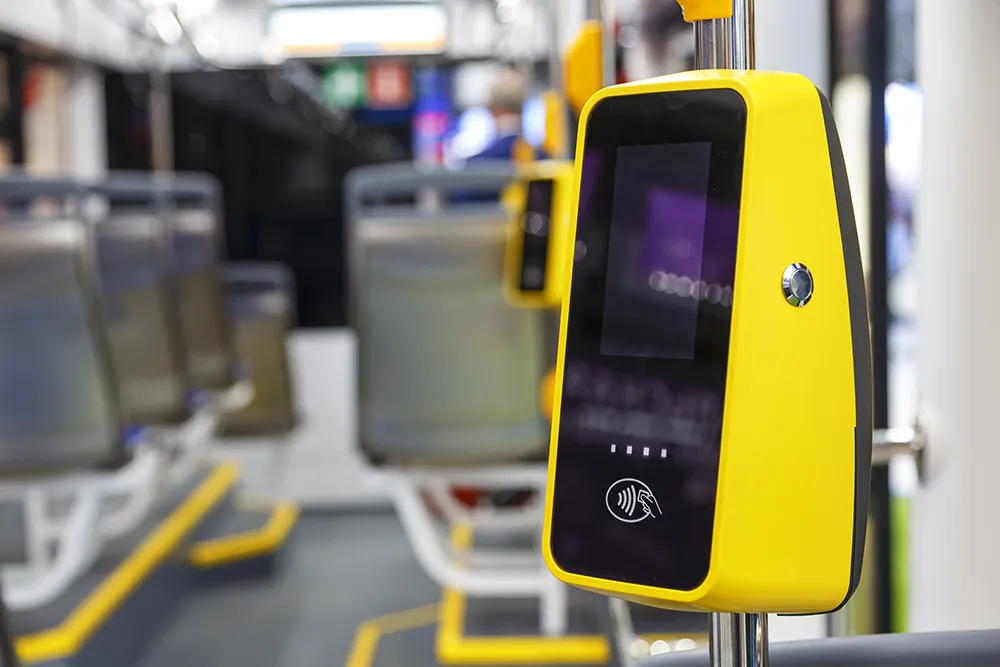In its new report, RFID in China 2015-2025, IDTechEx Research has identified over 150 Chinese companies supplying RFID and tracked how the industry in China will grow to become a US$4.3 billion opportunity in 2025.
Historically, the development of RFID in China has been heavily supported by the Chinese government. These include large projects such as national identification cards, passports and subway ticket applications. The entry barrier is usually high for those applications, as the suppliers need to
August 19, 2015
Read time: 2 mins
In its new report, RFID in China 2015-2025, 6582 IDTechEx Research has identified over 150 Chinese companies supplying RFID and tracked how the industry in China will grow to become a US$4.3 billion opportunity in 2025.
Historically, the development of RFID in China has been heavily supported by the Chinese government. These include large projects such as national identification cards, passports and subway ticket applications. The entry barrier is usually high for those applications, as the suppliers need to have good government connections and relatively mature technologies. These applications have typically used HF RFID systems, which account for 80 per cent of the RFID systems deployed in China. As a result, the HF supply chain is mature and well resourced.
Now China has also rapidly become a large exporter of RFID, going from having a global market supply share in UHF RFID inlays of less than 10 per cent in 2012 to 30 per cent in 2015, mainly used to tag apparel by clothing retailers around the world.
So far, China has lagged in adoption of UHF RFID compared to other territories such as the USA and Europe. As a result, UHF chip design and manufacturing development has been listed as one of the priorities in China's IoT development, culminating in several government funded programs to develop UHF RFID readers, for example.
The value of RFID in China as a whole was US$1.7 billion in 2014, with the value of tags accounting for US$430 million and readers $549 million. IDTechEx Research expects the market to grow to US$2.8 billion in 2020.
The RFID in China 2015-2025: Forecasts, Players, Opportunities study categorises more than 150 companies by value chain positions and specialized frequencies. The report gives a detailed analysis on the RFID value chain in China across all the main frequency types and ten year forecasts for the use of RFID in China by 13 application categories in addition to the Chinese government programs.
The research was conducted based on face-to-face or telephone interviews, secondary research on online resources, company annual reports, IDTechEx's database and other resources. RFID companies and RFID adopters will find great value when they are looking for partnership, trying to understand what is really going on in China or making strategic decisions in RFID.
Historically, the development of RFID in China has been heavily supported by the Chinese government. These include large projects such as national identification cards, passports and subway ticket applications. The entry barrier is usually high for those applications, as the suppliers need to have good government connections and relatively mature technologies. These applications have typically used HF RFID systems, which account for 80 per cent of the RFID systems deployed in China. As a result, the HF supply chain is mature and well resourced.
Now China has also rapidly become a large exporter of RFID, going from having a global market supply share in UHF RFID inlays of less than 10 per cent in 2012 to 30 per cent in 2015, mainly used to tag apparel by clothing retailers around the world.
So far, China has lagged in adoption of UHF RFID compared to other territories such as the USA and Europe. As a result, UHF chip design and manufacturing development has been listed as one of the priorities in China's IoT development, culminating in several government funded programs to develop UHF RFID readers, for example.
The value of RFID in China as a whole was US$1.7 billion in 2014, with the value of tags accounting for US$430 million and readers $549 million. IDTechEx Research expects the market to grow to US$2.8 billion in 2020.
The RFID in China 2015-2025: Forecasts, Players, Opportunities study categorises more than 150 companies by value chain positions and specialized frequencies. The report gives a detailed analysis on the RFID value chain in China across all the main frequency types and ten year forecasts for the use of RFID in China by 13 application categories in addition to the Chinese government programs.
The research was conducted based on face-to-face or telephone interviews, secondary research on online resources, company annual reports, IDTechEx's database and other resources. RFID companies and RFID adopters will find great value when they are looking for partnership, trying to understand what is really going on in China or making strategic decisions in RFID.









